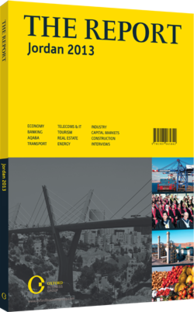Increasing viability: With political hurdles now behind it, Amman BRT moves forward
Amman has seen rapid population growth since becom-ing Jordan’s capital. Between 1996 and 2012 alone, the number of residents rose by 48% from 1.67m to 2.47m, according to data from the Department of Sta-tistics. Increased population has brought with it more pressure on the city’s transport infrastructure. Although the municipality has worked to mitigate road conges-tion with roundabouts, tunnels and underpasses, traf-fic issues persist. New roads and intersection upgrades, while helpful in the short term, appear to encourage more automobile use, continuing the cycle of conges-tion and new road construction. To tackle traffic issues in the long term, metropolises around the world have looked to alternatives to car use such as improved foot-paths, bikeways and mass transit.
BEYOND RAIL: The Greater Amman Municipality (GAM), aware that the fast-growing capital would continue to face congestion without a viable alternative to private cars, took action. In 2008 GAM developed a plan involv-ing a public transit backbone for the city based on bus rapid transit (BRT). Pioneered in Curitiba, Brazil in 1974, BRT systems use segregated bus lanes and prepaid fares to mimic the speed and reliability of a rail-based transit system. As they do not require extensive under-ground works and stations, BRT systems help keep upfront costs low and construction speedy. The GAM BRT initiative estimates that a subway system similar to its proposed BRT network could be 30 times more costly and take up to eight years longer to build.
The GAM BRT aims to use high-capacity buses that carry up to 150 passengers per vehicle. The system’s planners also say it would keep waiting times between buses low – as little as 90 seconds during peak hours. Thanks to dedicated bus lanes, the BRT system can also significantly reduce commute times, cutting 90-minute trips to 30 minutes, according to the Amman BRT.
FIRST STEPS: GAM initiated a study in 2009 to look at the feasibility, environmental impact and infrastruc-ture design of a potential BRT system for the capital. The French Development Agency (AFD) worked with the municipality during these stages. Planners estimated the project would require JD113.8m ($160.1m) in upfront capital. To cover these costs, AFD offered a $166m long-term “soft loan” to underwrite the project – an offer it made without a sovereign guarantee from the Jordanian government, showing the foreign agency’s confidence in the BRT’s viability. Once the municipali-ty’s design and feasibility work was complete, the ten-dering process began, and by July 2010 initial phases at Queen Rania Street were under construction.
In May 2011, however, some members of parliament moved to stop progress on the BRT system, question-ing its suitability for Amman. All construction was halt-ed while another government committee was formed to review its feasibility. Officials at GAM, especially those closely involved with the transit project, said the delays were politically motivated. “It is 100% certain that the issue has been politicised, but we do not know what exactly is happening between the government and parliament in connection with the BRT,” Ayman Smadi, GAM’s director of the BRT project, told The Jordan Times in May 2012. Amid the construction moratorium, AFD considered withdrawing its loan offer. At the time, GAM indicated that that the municipality was waiting for an oversight committee convened by the central govern-ment to give its blessing so that work could proceed.
MOVING FORWARD: By early autumn 2012, prospects for the BRT system looked brighter, and the central government hinted that it may even be looking into BRT opportunities in other parts of the kingdom. In Octo-ber 2012 the state-owned Petra news agency announced that the Ministry of Transport was starting to prepare financial and technical studies for a BRT sys-tem between Amman and Zarqa, Jordan’s second-largest city. The route serves around 100,000 passengers dai-ly. In February 2013 the oversight committee recom-mended that GAM restart the BRT with only minor adjustments, calling it a “vital” project for the city. Polit-ical jockeying and technical hurdles behind it, Amman’s BRT is set to be system up and running in the near future.
You have reached the limit of premium articles you can view for free.
Choose from the options below to purchase print or digital editions of our Reports. You can also purchase a website subscription giving you unlimited access to all of our Reports online for 12 months.
If you have already purchased this Report or have a website subscription, please login to continue.

